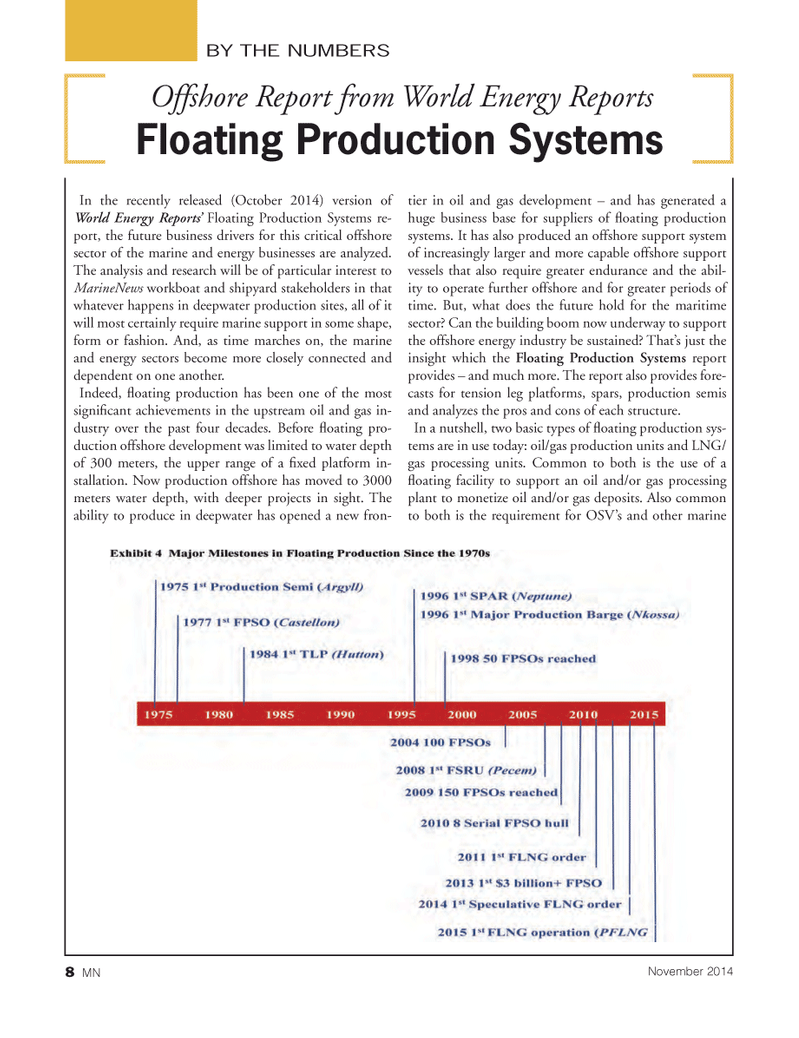
Page 8: of Marine News Magazine (November 2014)
Workboat Annual
Read this page in Pdf, Flash or Html5 edition of November 2014 Marine News Magazine
BY THE NUMBERS
In the recently released (October 2014) version of
World Energy Reports’ Floating Production Systems re- port, the future business drivers for this critical offshore sector of the marine and energy businesses are analyzed.
The analysis and research will be of particular interest to
MarineNews workboat and shipyard stakeholders in that whatever happens in deepwater production sites, all of it will most certainly require marine support in some shape, form or fashion. And, as time marches on, the marine and energy sectors become more closely connected and dependent on one another.
Indeed, fl oating production has been one of the most signifi cant achievements in the upstream oil and gas in- dustry over the past four decades. Before fl oating pro- duction offshore development was limited to water depth of 300 meters, the upper range of a fi xed platform in- stallation. Now production offshore has moved to 3000 meters water depth, with deeper projects in sight. The ability to produce in deepwater has opened a new fron- tier in oil and gas development – and has generated a huge business base for suppliers of fl oating production systems. It has also produced an offshore support system of increasingly larger and more capable offshore support vessels that also require greater endurance and the abil- ity to operate further offshore and for greater periods of time. But, what does the future hold for the maritime sector? Can the building boom now underway to support the offshore energy industry be sustained? That’s just the insight which the Floating Production Systems report provides – and much more. The report also provides fore- casts for tension leg platforms, spars, production semis and analyzes the pros and cons of each structure.
In a nutshell, two basic types of fl oating production sys- tems are in use today: oil/gas production units and LNG/ gas processing units. Common to both is the use of a fl oating facility to support an oil and/or gas processing plant to monetize oil and/or gas deposits. Also common to both is the requirement for OSV’s and other marine
Offshore Report from World Energy Reports
Floating Production Systems 8 MN
November 2014
MN Nov14 Layout 1-17.indd 8 10/20/2014 2:43:41 PM

 7
7

 9
9
